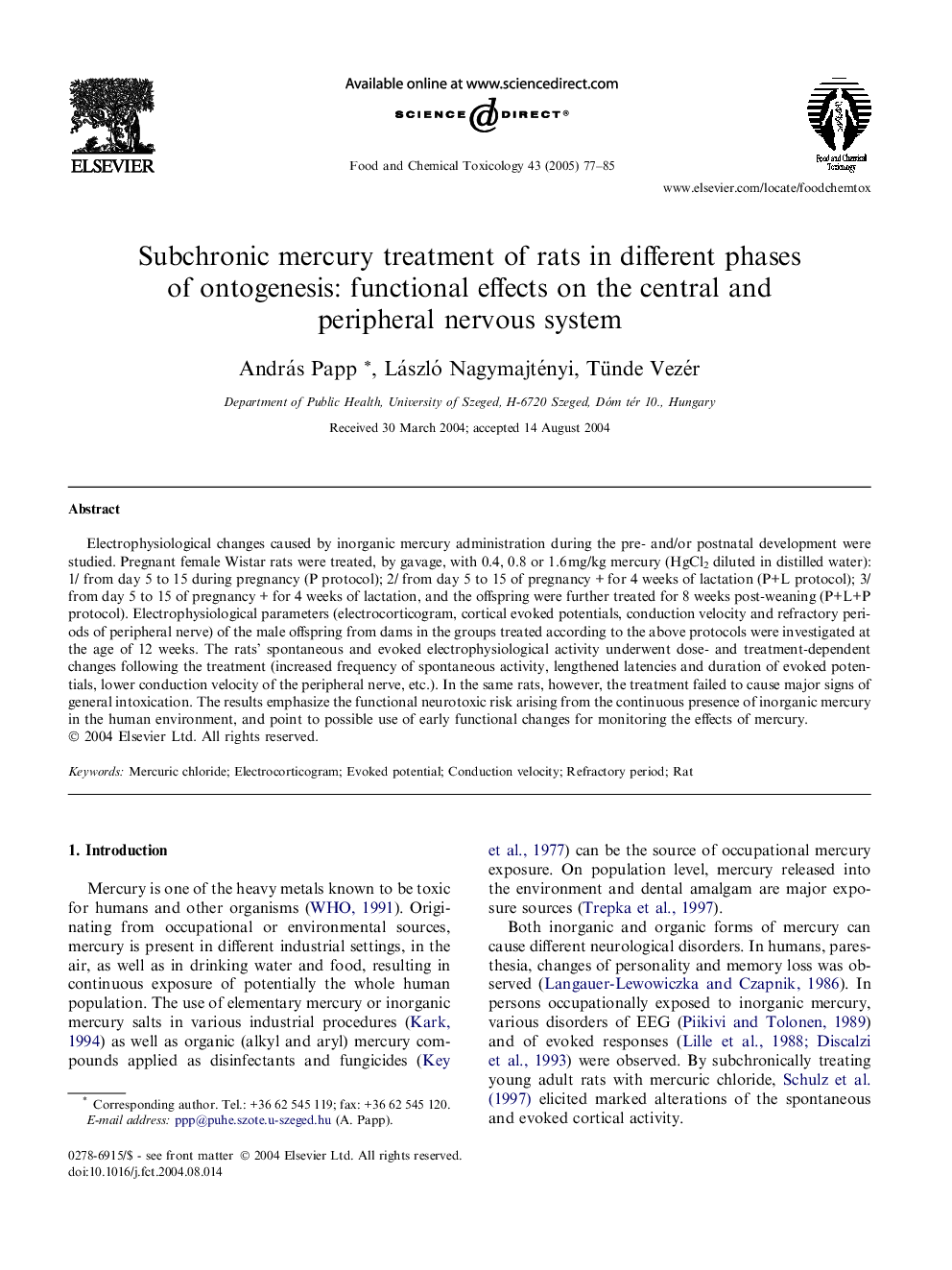| Article ID | Journal | Published Year | Pages | File Type |
|---|---|---|---|---|
| 9031358 | Food and Chemical Toxicology | 2005 | 9 Pages |
Abstract
Electrophysiological changes caused by inorganic mercury administration during the pre- and/or postnatal development were studied. Pregnant female Wistar rats were treated, by gavage, with 0.4, 0.8 or 1.6 mg/kg mercury (HgCl2 diluted in distilled water): 1/ from day 5 to 15 during pregnancy (P protocol); 2/ from day 5 to 15 of pregnancy + for 4 weeks of lactation (P+L protocol); 3/ from day 5 to 15 of pregnancy + for 4 weeks of lactation, and the offspring were further treated for 8 weeks post-weaning (P+L+P protocol). Electrophysiological parameters (electrocorticogram, cortical evoked potentials, conduction velocity and refractory periods of peripheral nerve) of the male offspring from dams in the groups treated according to the above protocols were investigated at the age of 12 weeks. The rats' spontaneous and evoked electrophysiological activity underwent dose- and treatment-dependent changes following the treatment (increased frequency of spontaneous activity, lengthened latencies and duration of evoked potentials, lower conduction velocity of the peripheral nerve, etc.). In the same rats, however, the treatment failed to cause major signs of general intoxication. The results emphasize the functional neurotoxic risk arising from the continuous presence of inorganic mercury in the human environment, and point to possible use of early functional changes for monitoring the effects of mercury.
Related Topics
Life Sciences
Agricultural and Biological Sciences
Food Science
Authors
András Papp, László Nagymajtényi, Tünde Vezér,
